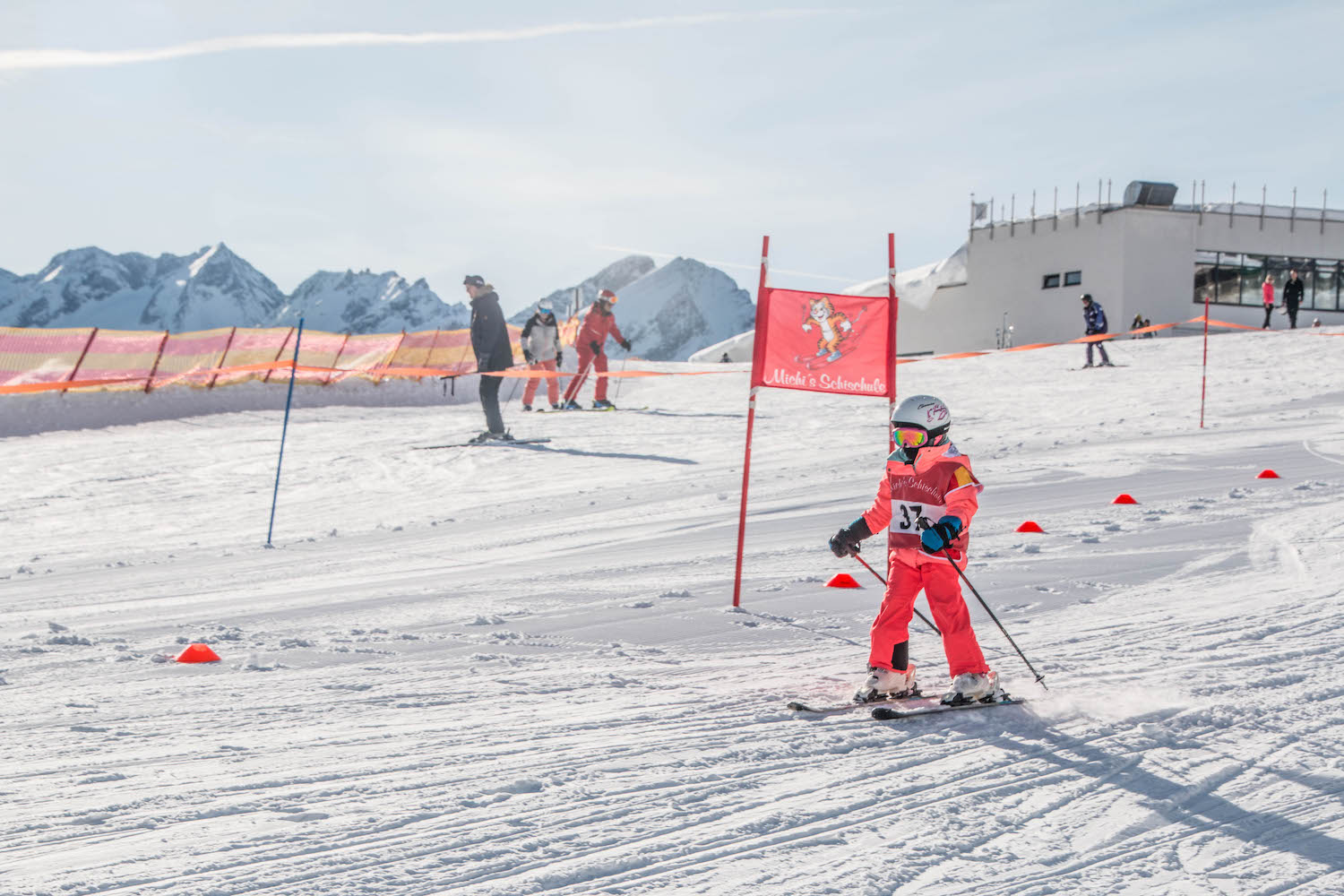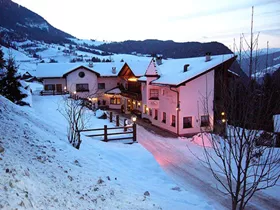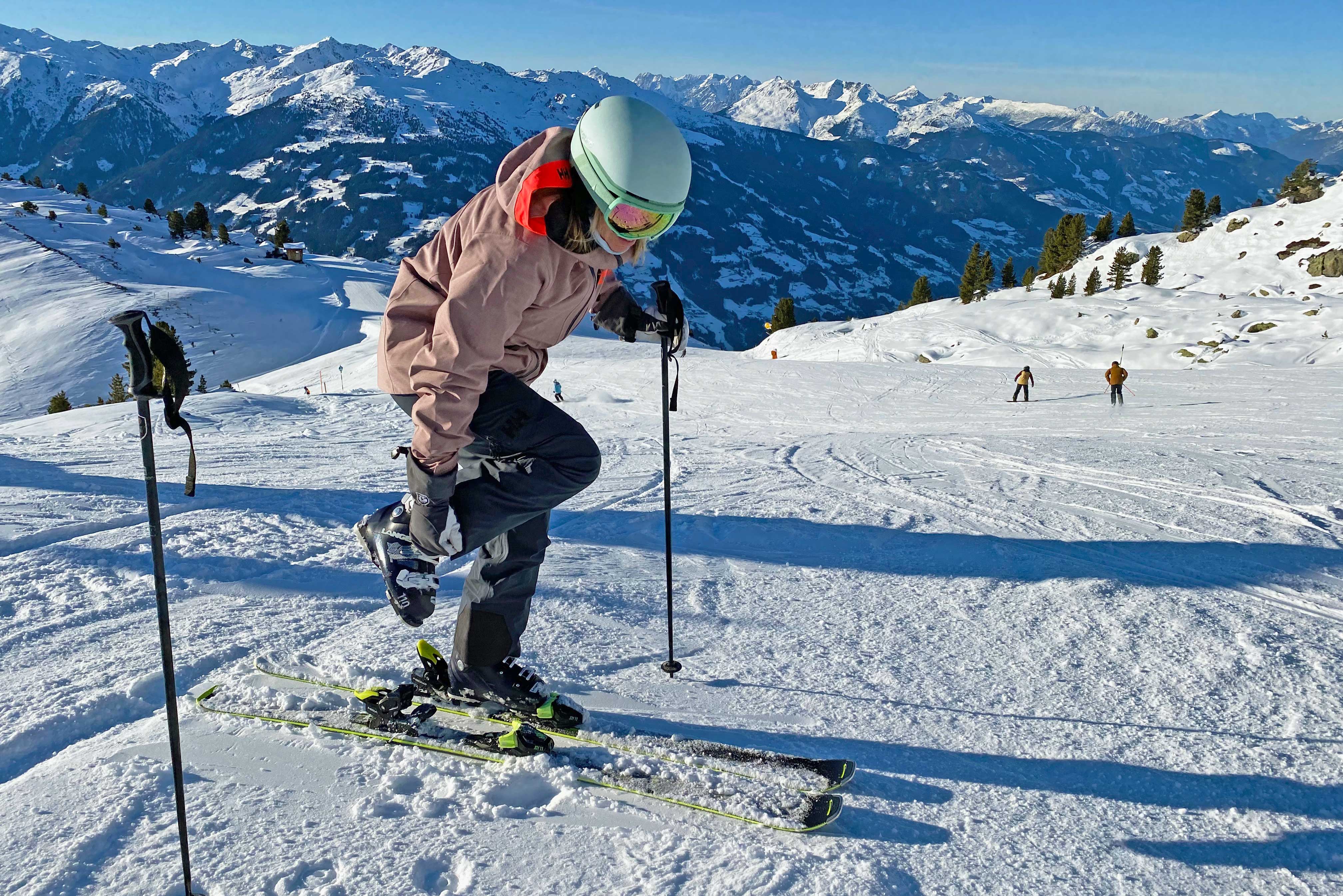

Your little one on skis - what can be cuter than that? You'll see kids just a metre tall glide down the practice slope on mini skis like proper racing monsters, their parents super proud on the side. It's great fun, but is it actually good for the kids? What is the right age for first ski lessons?
'Diaper-free'
Most ski schools in Austria only accept children when they are 'diaper-free'. After all, ski instructors are there to teach a child how to ski rather than provide childcare. In Austria, toddlers can usually start skiing at ages 3 or 4. In France and Switzerland, they sometimes accept children as young as 2,5. These ages are striking compared to other sports. At most football and swimming clubs, children can start when they are 5 or 6 years old.

So, what is wise?
Many parents wonder what the right age for their kids to start ski lessons is. Of course, there is no general, unequivocal answer here, but some advice seems in order.
So we asked the expert
'Of course, the strength and talent vary from child to child, but in general, I think ski lessons at the age of two or three are irresponsible,' says sports pedagogue Petra van der Kooi. According to Van der Kooi, this should be a consideration for the parents and the ski school. 'It makes no sense to teach children under five technical movements; their fine motor skills and coordination are not yet sufficiently developed,' the sports pedagogue believes. Moreover, small kids lack strength: 'Adults often have muscle pain after a week of skiing. Little kids don't get muscle pain, but I don't think it's good for their growth.' Petra also understands that some toddlers just want to imitate their bigger siblings and romp around in the snow. 'If your child is really eager, let him or her playfully glide on skis for half an hour. Think of it as a kind of toddler's gym.'
Balancing on skis and gliding
Balancing on skis and gliding is exactly what toddler ski lessons are all about, according to Ivo Trouw. He is an osteopath, a father of two and a ski instructor himself. 'Ski lessons for toddlers are mainly about having fun in the snow,' Ivo explains. According to Trouw, there is thus no harm in enrolling toddlers in ski lessons as long as the parents have the same objective. 'Parents should not expect their 3-year-old child to come down the slope making turns. At that age, that's not possible yet,' he says. With that, the osteopath confirms the lack of fine motor skills and coordination of a three-year-old that Petra mentioned earlier. 'For a three-year-old, making a snowplough (pizza point) is very difficult because it requires them to turn their legs inwards. This movement demands much more coordination and strength than turning the legs outwards - an action kids do when they kick away a ball,' says Ivo. According to him, children's skiing lessons consisting of stepping, gliding and spinning around in ski carousels can do no harm to a three-year-old. But with real skiing and going down a slope, parents should wait till their kids are 4-5 years old.

The leash in hands
Of course, some parents disregard such advice and take their toddlers up the slope regardless. You often see them going down the mountain with their child in a harness. The child skis in front, followed by one of the parents holding two leashes. The child has the harness tied somewhere around his body - often around his upper body, but there are also harnesses where the leashes are around the ski boots. With the leashes, the parent directs the child to turn. We advise against this option tremendously, and the expert agrees. 'Personally, I find these harnesses life-threatening,' says Ivo Trouw. According to Ivo, it again highlights the lack of coordination and fine motor skills. 'If the child can already stand in a snowplough, the harness often can't be used for its intended purpose: braking. Moreover, when afraid, children tend to stretch their legs, which increases speed. Parents must be very strong to hold such forces. If they can't control the harness, the chance of accidents is very high. Then it's better to let kids enjoy two hours of balancing and gliding in a ski class,' the osteopath believes.

Eine andere Sprache
So you let your child balance and glide in a ski lesson. You drop him/her in a class with some other kids and an unknown ski instructor. If you are unlucky, the teacher only speaks German, French or Italian - an uncomfortable thought for many parents. But is it really such a big deal for the children? 'Children generally cope very well with groups and foreign languages. They communicate with their hands and feet, are flexible and adapt quickly,' reassures Petra, a sports pedagogue. According to her, an important task lies with the ski instructor: 'Instructors have to make sure that children feel comfortable in communicating with them and that they are understood. Moreover, they must adapt their didactic approach to the age of the children.'
Let's have fun
So there's a difference between playfully trying out the skis and really learning to ski. Your three-year-old can play around in the snow, but making turns on the slope will come later. 'Sport generates fun and self-confidence. But if you force it too early, it can backfire,' says Petra van der Kooi. So make sure you have fun; there'll be plenty of time for skiing later!
Note: the opinions of the interviewees are just advice. Always consult the ski school beforehand and assess what your child can or cannot handle. You know your child best.














